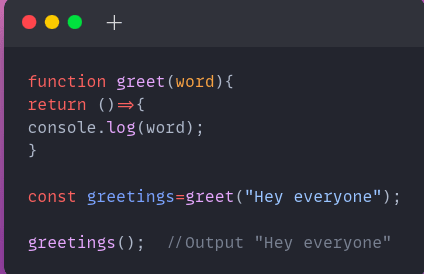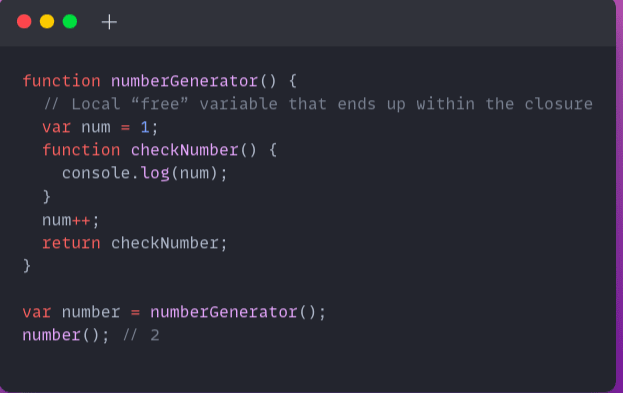A closure is a function combined with references to variables define outside of it.
They enclose the function and variable in its environment.
Let's say you're having a function greet
There's two interesting points to notice here.
The retured function from greet can access the word parameter.
The returned function maintain the value of word when greetings is called outside scope of word.
The first point can be explained by lexical Scope
Lexical Scope- The returned function can access word before it exists in its outer scope.
The second point because of closures
Closure maintains the variable references ,which allows function to access variables outside of their scope.
Examples of Closures in Javascript
Example 1:
In the example above, the function numberGenerator creates a local “free” variable num (a number) and checkNumber (a function which prints num to the console).
The function checkNumber doesn’t have any local variables of its own — however, it does have access to the variables within the outer function, numberGenerator, because of a closure.
Therefore, it can use the variable num declared in numberGenerator to successfully log it to the console even after numberGenerator has returned.
Example 2:
In this example we’ll demonstrate that a closure contains any and all local variables that were declared inside the outer enclosing function.
function sayHello() {
Notice how the variable hello is defined after the anonymous function — but can still access the hello variable. This is because the hello variable has already been defined in the function “scope” at the time of creation, making it available when the anonymous function is finally executed.









Top comments (0)